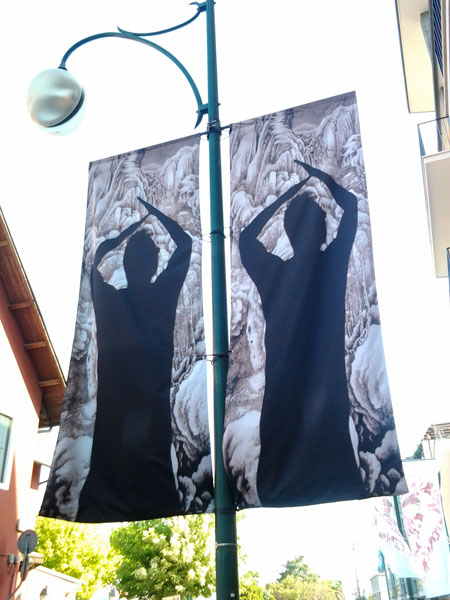Taiwan R.O.C. - CHEN CHUN-HAO

Since 1997, Chen Chun-Hao has launched and intensified a project that consists of several series of “nail pieces”. From early abstract shapes, involving light effects, to his “writing” pieces representing Chinese characters and to his current reproduction of traditional Chinese masterpieces, Chen Chun-Hao has persistently and exclusively used the nail gun as his working tool, ramming countless tiny stainless nails, called “mosquito nails”, into the two-dimensional surface of the canvas.
His reproductions of Chinese landscape paintings from the Taipei Palace Museum carry both postcolonial mimicry and phenomenologically subversive power. By re-creating and copying the masterpieces in their original dimension and in every detail, such as shades, density, light and texture, Chen Chung-hao not only consolidates the intrinsic status of the “traditional masterpiece”, but, more importantly, replaces and challenges those orthodox working tools, brush and ink, the very insignia of the artist as well as the writer up to the present time. This formidable undertaking of literally, riddling the canvas with gunshots requires one half to one million mosquito nails for each work.
In an earlier series, Chen developed his “nail pieces” via Chinese characters by reproducing famous calligraphies. His current reproductions of landscape paintings include those of three iconic works of tenth and eleventh century painting from the National Palace Museum: Guo Xi’s Early Spring (158,3 x 108,1 cm), Fan Kuan’s Travellers Among Mountains And Streams (206,3 x 103,3 cm) and Li Tang’s Wind in the Pines Among a Myriad Valleys (188,7 x 139,8 cm).
Interestingly enough, however, his present piece for the OPEN exhibition shows a huge black figure in silhouette standing in front of a traditional landscape painting. With raised arms, making a “no entry” traffic sign, the gesture of this ghost-like person could well be a statement on Taiwan’s relationship with China, either in a historical, cultural, or political sense. Yet the title of the work, Non-nuclear Landscape, points to quite another dimension of meaning, one that reinstates, quite interestingly, the idealistic connotations of traditional landscape painting while putting its imagery into the service of an urgent contemporary issue.
Text by Yang Wen-I